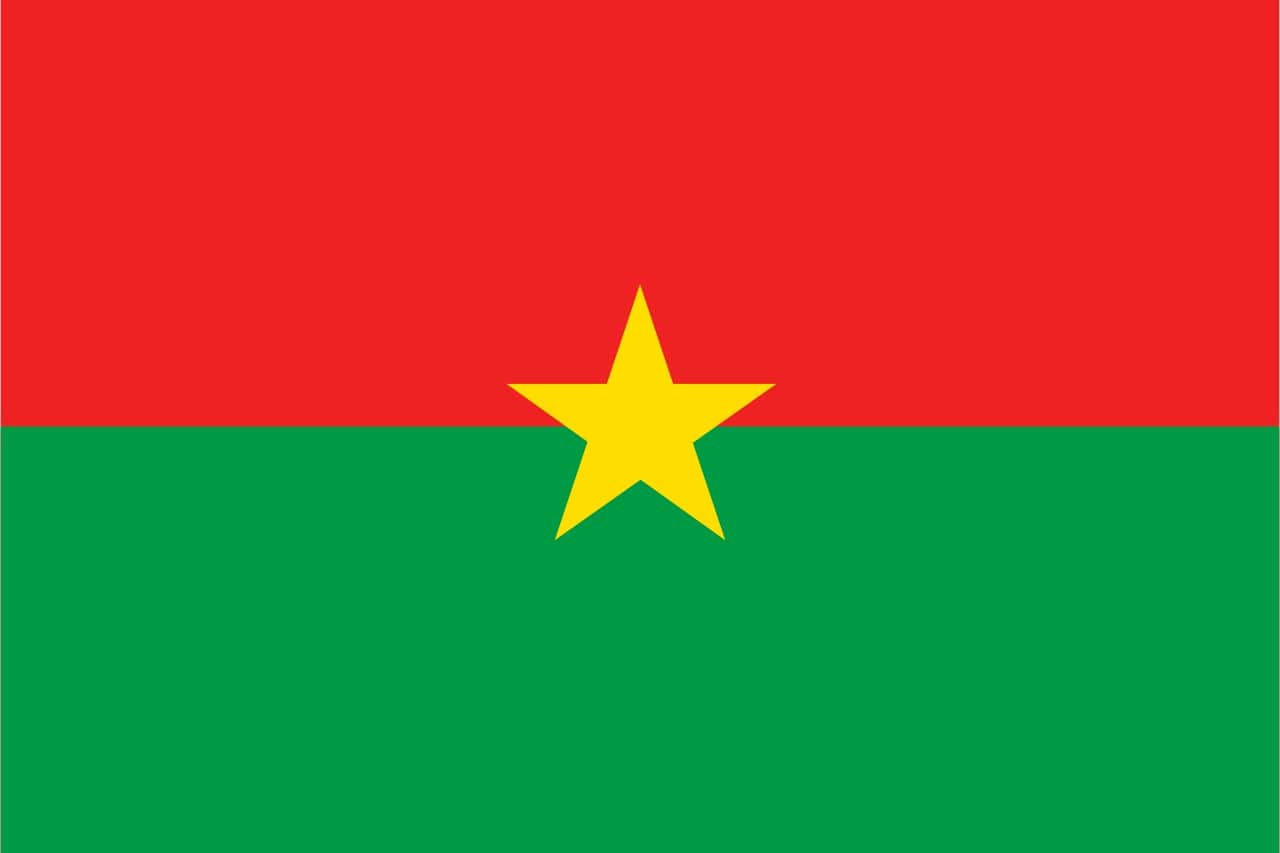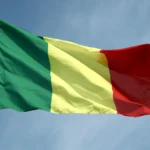
Burkina Faso, a landlocked country nestled in the heart of West Africa, is a nation rich in history, culture, and resilience. From its journey to independence to its commitment to preserving its unique identity and addressing modern challenges, Burkina Faso offers a captivating narrative. In this exploration, we delve into 25 historical facts and numerical trivia that provide a deeper understanding of this vibrant nation, its people, and its ongoing efforts to forge a prosperous and inclusive future.
Independence: Burkina Faso’s independence on August 5, 1960, marked a significant milestone in its history. Prior to this date, the country was known as Upper Volta and was a French colony. Independence brought self-governance and sovereignty to the Burkinabe people, allowing them to chart their own political and economic course.
Name Change: On August 4, 1984, the country officially changed its name to Burkina Faso. This name change was significant as it reflected a commitment to national identity and the values of integrity and uncorruptibility. It was a symbolic move to break away from the colonial legacy and embrace a unique identity.
Capital: Ouagadougou, often referred to as Ouaga, has been the capital of Burkina Faso since independence. It is not only the political center of the country but also its largest city and an important cultural and economic hub in West Africa.
Population: With a population of approximately 21.5 million people (as of 2021), Burkina Faso is one of the most populous countries in West Africa. This demographic diversity contributes to the nation’s rich cultural tapestry.
Size: Covering an area of roughly 274,200 square kilometers, Burkina Faso is a landlocked country in West Africa. Its geographical location has both advantages and challenges in terms of trade and access to the sea.
President: In 2021, Roch Marc Christian Kaboré was serving as the President of Burkina Faso. His leadership and policies have played a crucial role in the country’s political and economic development.
Political Parties: Burkina Faso’s multi-party system has been integral to its political landscape. Different parties compete in elections, reflecting the country’s commitment to democratic governance.
Languages: While French is the official language, the country’s linguistic diversity is striking. Indigenous languages such as Moore, Dioula, and Fulfulde are spoken by various ethnic groups, emphasizing Burkina Faso’s cultural richness.
Geography: Burkina Faso’s geographical location, bordered by six neighboring countries, has implications for trade, security, and regional cooperation. Its proximity to Mali, for example, has posed challenges due to instability in that region.
Revolution: The 1983 revolution led by Thomas Sankara was a defining moment in Burkina Faso’s history. Sankara’s presidency was marked by ambitious reforms, including efforts to promote gender equality and improve healthcare and education. His assassination in 1987 was a tragic event that left a lasting impact on the country’s political landscape.
Height Measurement: Mount Tenakourou, the highest point in Burkina Faso, reaches an elevation of approximately 749 meters (2,457 feet) above sea level. While it may not be as towering as some of the world’s famous peaks, it is a significant geographic feature within the country.
Religion: Burkina Faso is religiously diverse. Islam and Christianity are the dominant religions, with a substantial portion of the population adhering to either faith. Additionally, Burkina Faso also has indigenous religious practices, reflecting the nation’s religious pluralism.
Burkina Faso Flag: The national flag of Burkina Faso is a representation of its identity and values. The red and green bands symbolize the struggle for independence and hope for the future, while the yellow star signifies the guiding light of the revolution.
Education: Burkina Faso faces challenges in its education system, with a literacy rate of around 36% (as of 2021). The government and international organizations have been working to improve access to quality education, particularly in rural areas.
Economy: Burkina Faso’s economy is largely agrarian, with agriculture providing employment for a significant portion of the population. Mining, particularly gold mining, has become a crucial economic sector, contributing to the country’s revenue.
Currency: The West African CFA franc (XOF) serves as Burkina Faso’s official currency. It is used not only in Burkina Faso but also in several other West African countries, reflecting regional economic integration.
Droughts: Burkina Faso has experienced recurring droughts, which have had severe implications for agriculture and food security. These natural challenges underscore the importance of sustainable agricultural practices and water resource management.
Wildlife: Burkina Faso boasts a diverse range of wildlife, including elephants, lions, hippos, and various antelope species. National parks like Arly and Po are vital for conservation efforts and eco-tourism, contributing to the country’s biodiversity.
Landlocked Status: Being landlocked can present logistical challenges for international trade. Burkina Faso relies on neighboring countries with access to ports, such as Ivory Coast and Ghana, for imports and exports. These trade relationships are essential for the nation’s economic well-being.
Festivals: Burkina Faso hosts several cultural festivals that celebrate its rich heritage. The FESPACO film festival, known as Africa’s largest film festival, showcases the continent’s cinematic talent. The International Art and Craft Fair (SIAO) highlights traditional crafts and arts, providing a platform for artisans to display their skills and cultural traditions.
Traditional Music: Burkina Faso has a vibrant music scene enriched by traditional instruments such as the balafon (a xylophone-like percussion instrument) and the kora (a stringed instrument resembling a harp). These instruments, along with various rhythmic patterns and vocal styles, contribute to the country’s rich musical heritage.
Export: Burkina Faso is a significant exporter of various products. Gold mining is a major contributor to its exports, and cotton production is another crucial industry. Livestock farming, particularly cattle, also plays a role in the country’s export trade.
Education Initiatives: Burkina Faso has made concerted efforts to improve its education system through initiatives like the “Plan National d’Education et de Formation” (PNEF). These initiatives aim to enhance access to quality education, reduce illiteracy rates, and provide skills training to the youth, contributing to human capital development.
Women’s Rights: Burkina Faso has made significant strides in promoting women’s rights and gender equality. Women hold prominent positions in politics, and initiatives have been implemented to address gender-based violence and improve access to education and healthcare for women and girls.
Youth Population: A significant portion of Burkina Faso’s population is young, with a high proportion of youth under the age of 25. This demographic reality highlights the importance of youth empowerment, education, and employment opportunities in shaping the country’s future and ensuring social and economic stability.
Frequently Asked Questions About Burkina Faso:
1. Where is Burkina Faso and what is it like?
Burkina Faso is a landlocked country in West Africa, bordered by Mali, Niger, Benin, Togo, Ghana, and Ivory Coast. The landscape varies across the country, with the north dominated by the Sahel, a semi-arid savanna region bordering the Sahara Desert. Moving south, you’ll find Sudanian savanna with woodlands and grasslands, before reaching the more humid Guinean savanna with its gallery forests in the south. Burkina Faso has a warm climate with a long dry season and a shorter wet season.
2. What is the capital of Burkina Faso?
The capital of Burkina Faso is Ouagadougou, a bustling city located near the center of the country. Ouagadougou is the political, administrative, and economic center of Burkina Faso, with a population of over 3 million people. The city is known for its lively markets, museums, and its biennial Pan-African Film and Television Festival of Ouagadougou (FESPACO), the most prestigious film festival in Africa.
3. What language is spoken in Burkina Faso?
French was previously the official language of Burkina Faso, but a recent constitutional amendment in January 2024 changed its status to a “working language” alongside English. Burkina Faso boasts a rich linguistic tapestry with over 60 indigenous languages spoken throughout the country. The most common language by far is Mooré, spoken by over half the population and primarily associated with the Mossi people, the largest ethnic group in Burkina Faso.
4. What is the currency of Burkina Faso?
The official currency of Burkina Faso is the West African CFA franc (XOF). It’s a common currency shared by eight West African countries.
5. What is the culture of Burkina Faso?
Burkina Faso is a land of vibrant and diverse cultures. With over 60 ethnic groups, each has its own unique traditions, languages, and customs. Music and dance are deeply ingrained in Burkina Faso’s culture, with a strong emphasis on percussion instruments and energetic rhythms. Masks play a significant role in many ceremonies and festivals, with different styles and meanings associated with each ethnic group. Burkina Faso is also known for its skilled artisans who produce a variety of crafts, including wood carvings, pottery, and woven textiles.
6. What is the religion of Burkina Faso?
Islam is the predominant religion in Burkina Faso, practiced by roughly 64% of the population. Christianity is the second-largest religion, with approximately 26% following various Christian denominations. Traditional African religions are also practiced by a minority of the population, often blending with Islam or Christianity.
7. What is the political situation in Burkina Faso?
Burkina Faso has a history of political instability, with coups d’état and periods of military rule. The most recent coup occurred in January 2023. The country is currently undergoing a transitional period with a military junta in power. There are ongoing efforts to restore civilian rule and hold democratic elections.
It’s important to note that the political situation in Burkina Faso is fluid, so staying up-to-date on current events is recommended.
8. Is Burkina Faso safe to visit?
Burkina Faso has faced security challenges in recent years, including terrorism and banditry, particularly in the northern regions bordering Mali. It’s advisable to register with your embassy before traveling and to stay informed about current security advisories. Travel is generally considered safe in the south, particularly the capital Ouagadougou. However, it’s always wise to exercise caution and be aware of your surroundings.
9. What are some interesting things to see and do in Burkina Faso?
Burkina Faso offers a variety of experiences for travelers. Here are a few ideas:
- Explore the bustling markets of Ouagadougou, like the Grand Marché, where you can find everything from handcrafted souvenirs to local spices.
- Visit Tiébélé, a village famous for its unique mud houses with painted geometric designs.
- Hike in the W National Park, a UNESCO World Heritage Site known for its diverse wildlife, including elephants, lions, and giraffes.
- Attend FESPACO, the Pan-African Film and Television Festival of Ouagadougou, and immerse yourself in African cinema.
- Learn about the Mossi people, the largest ethnic group in Burkina Faso, and their rich cultural traditions.








